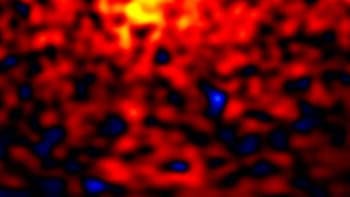Scientists broadly agree that planets form from swirling gas and dust clouds in young solar systems, but the early stages of particle aggregation are not well understood. Now the Cosmic Dust Aggregation Experiment - CODAG - performed on board the space shuttle has provided new insights into this process. An international collaboration of scientists lead by Jürgen Blum, an astrophysicist at the University of Jena in Germany, found that the results on the whole support existing theories of planet formation, but there were also surprises (J Blum et al 2000 Phys. Rev. Lett. 85 2426).
The CODAG experiment recreated for the first time conditions in the early solar system in order to observe the dust clustering process. Micron-sized silicon oxide grains were injected into a chamber filled with low-pressure gas to simulate the pre-planetary nebula of dust. In the very low gravity environment of the space shuttle, it is thermal activity – or Brownian motion – that drives dust particles of this size to collide and stick together, a process called agglomeration. Microscopes inspected the motion and clustering behaviour of the particles and the team compared their findings with predictions from numerical models. “We saw, for the first time, the onset of dust accumulation”, Blum told PhysicsWeb, “so our concept of planetesimal formation as a dust aggregation process is correct”.
The particles formed two main clouds, in which twelve distinct clusters emerged. But the astronomers were surprised to find that the clusters were much more linear and less sheet-like than predicted. Numerical simulations had suggested that the mass of a cluster would be related to its size raised to a power of about 2. But the clusters observed were very elongated, implying a power of only 1.3. When the long thin clusters collide, they are much more likely to make contact away from their centres, resulting in fluffier, less dense aggregates. Astronomers may now need to rethink their theories of how such particles would stick together to form larger bodies.
Blum and co-workers also confirmed that, as expected, electrostatic interactions between dust particles are negligible. This scenario is likely to be similar to conditions in the early solar environment, in which the dust and gas nebula would have provided a shield from the ionising effects of solar radiation. However, the CODAG experiment did not take into account magnetic field effects, and experiments are now being devised to establish the possible role of magnetic forces in the aggregation process.



